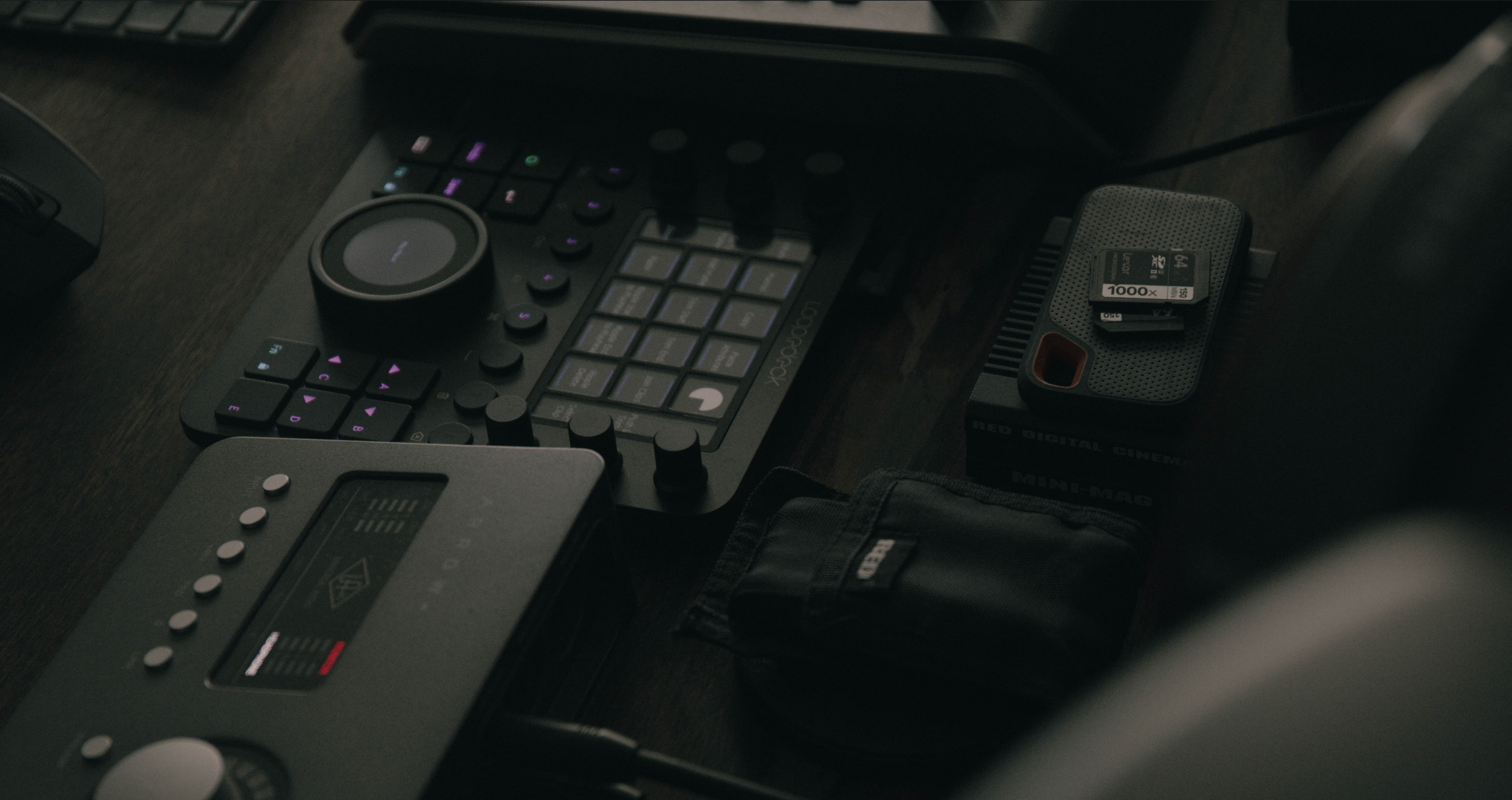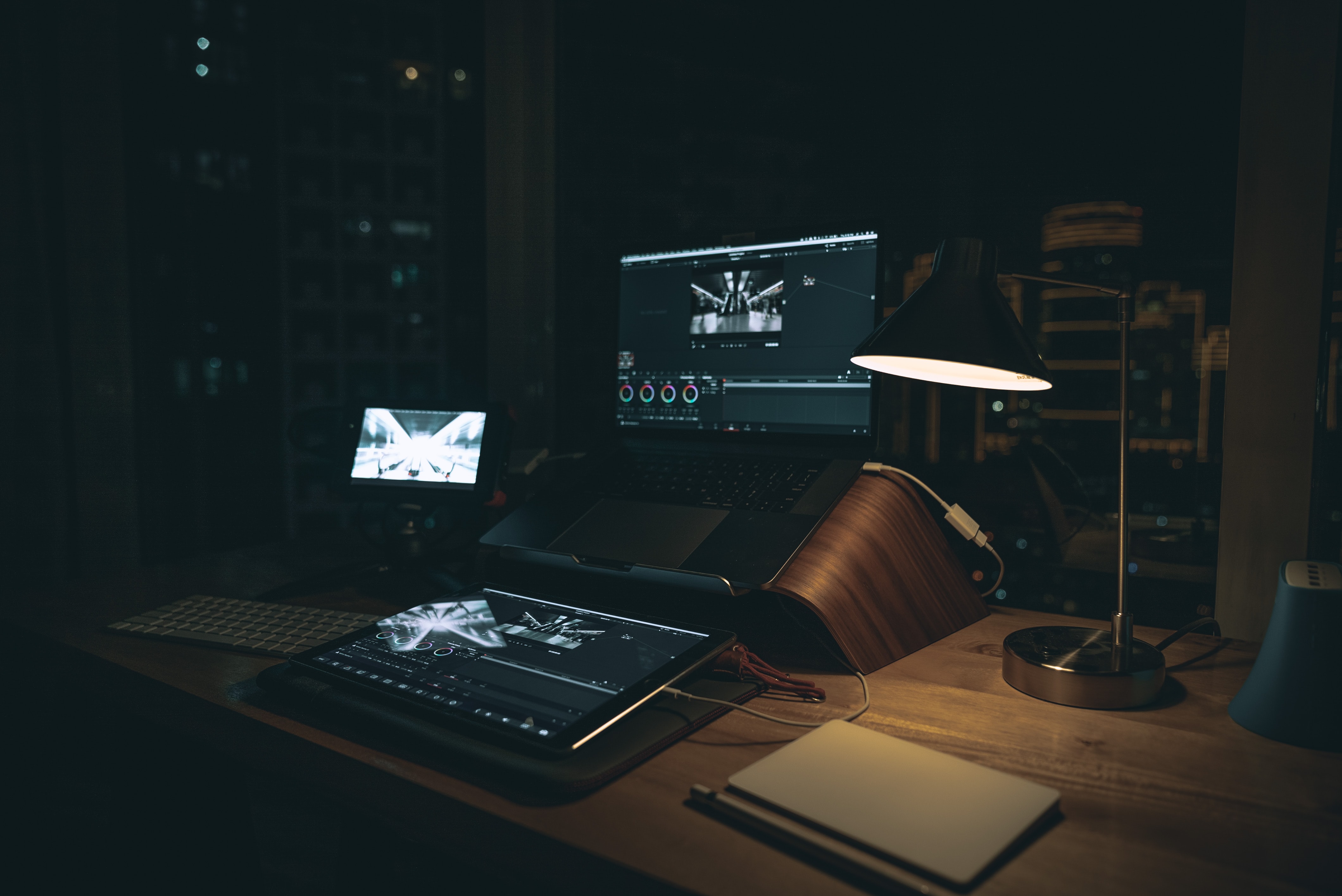

How (and why) to use markers, flags, and keywords in Blackmagic Design DaVinci Resolve 16

Blackmagic Design's DaVinci Resolve is a favorite amongst professional post-production teams. This non-linear editing software encompasses multiple editing stages, from color grading to sound design. It‚Xôs also built for collaboration ‚Xî using markers, flags, and keywords to make teamwork seamless.
In this article, we explore how to use metadata like markers, flags, and keywords in Blackmagic Design DaVinci Resolve 16. We'll also explain how Simon Says, the AI transcription and assembly tool, helps speed up the marker-making process so your team can get straight to work. (If you're ready to start using Simon Says with Resolve for markers, click here.)
An Intro to Metadata in Blackmagic Design DaVinci Resolve

Markers, flags, and keywords all fall under the category of ‘metadata' in DaVinci Resolve. Before we dive into the detail, let's spend a moment unpacking the different types of metadata you'll come across while editing.
Clip Metadata in DaVinci Resolve
Metadata are bits of information associated with source media via the 'Metadata Editor' tab. For example:
- The 'Shot & Scene' metadata group covers descriptions, comments, keywords, people, clip color, shot type, angle, shoot day, and other details about the clip's content.
- There's a 'Camera' metadata group for inputting camera type, lens, filter, shutter etc.
- DaVinci Resolve also has separate metadata groups for different editing departments, such as 'Audio' and 'Stereo3D and VFX'.
- There's even a 'Reviewed By' list for tracking who has reviewed the clip (DOP, Director, VFX Supervisor etc.) and whether it has been sent to the studio.
And that's just scratching the surface of metadata in DaVinci Resolve! Not all of the available metadata will be relevant to your project, but you should spend a little time exploring the possibilities.
Manually vs. Automatically Added Metadata
Metadata can be added manually and automatically into DaVinci Resolve.
- Manually Add or edit data to individual clips in the Metadata Editor. You can also bulk add data by clicking on a metadata group first. Just select multiple clips in the Media Pool and input your information. Once you're done, click 'Save' in the Metadata Editor.
- Automatically, DaVinci Resolve will also scan for metadata as your footage is imported. This metadata is sometimes auto-generated by the camera or microphone, but it can also be entered into the device at the time of recording. Top tip: check if you can input any relevant metadata to your equipment before or during shooting, this makes managing rushes easier in post.
The Basics of Markers, Flags, and Keywords in Blackmagic Design DaVinci Resolve

DaVinci Resolve Markers vs. Flags
Markers and flags are both reference indicators. They allow editors to quickly identify clips in the Media Pool and timeline, then insert notes and comments if needed.
Those are the similarities, but these are the differences:
Markers
Markers can be added to the timeline and on clips themselves they help you keep track of your project and your key shots, as well as making editing easier.
Just like in Adobe Premiere Pro, you can set DaVinci Resolve markers to a single frame or you can give it a duration to extend it over multiple frames (also known as a ‘ranged marker’).
To add markers: Press the M key while in the timeline or on a selected clip. You can then double-click the marker to add notes and keywords.
Flags
Flags can only be applied to whole clips.
You can add multiple flags to a single clip, whether in the timeline or the Media Pool. And when you add a flag, it will be automatically applied to all instances of the clip, including separate timelines for compound clips.
To add flags: Select a clip and go to the Metadata Editor or click on the flag button in the toolbar.
Keywords
Finding a specific clip in the Media Pool can be like searching for a needle in a haystack. That’s where keywords come in handy. Like Adobe Premiere Pro and Final Cut Pro X, DaVinci Resolve’s keywords are tags used to group multiple clips together. You can also filter and sort through clips by keywords in the Media Pool or timeline.
To add keywords: Select one or more clips and enter keywords in the Metadata Editor. You can also add keywords for markers to tag a selection within a clip.
Workflow Best Practices for Markers, Flags, and Keywords in Blackmagic Design DaVinci Resolve

New to DaVinci Resolve and feeling a little overwhelmed by what we've covered so far? Don't worry. Follow the below best practices and you'll quickly get the most from metadata in your post-production workflow:
Share Notes for Color Grading, VFX, and Sound
Any flags or markers made on the Edit page are reflected in the Color, Fusion, and Fairlight pages. This allows you to communicate with your colorist, VFX editor, and sound designer directly within DaVinci Resolve.
Add Color Tags to Clips, Markers, and Flags
Colors can be applied to individual clips, but you can also assign different colors to different markers and flags. This can help identify key sequences and clips in long timelines, for speedier organization.
Filter Clips in the Edit Index
The Edit Index (found in the Edit page) displays the timeline in chronological list format with its metadata attached. Head here to quickly scan through your clips and/or filter clips by flags, markers, and colors.
Organize Clips with Smart Bins
DaVinci Resolve comes with manually managed bins to organize clips. 'Smart bins' help you automate this process. Simply set up custom rules using metadata to dynamically sort clips. The better your metadata, the more organized your smart bins will be.
Use Face Detection to Generate People Keywords
DaVinci Resolve's face detection feature is a no-brainer for projects with multiple characters or interviewees. Select your clips and the software will automatically scan then group‚ your clips based on who's in them. This speeds up the process of adding keywords for different individuals.
Set Metadata Guidelines for the Team
Make sure your team is aligned on naming conventions, keyword usage, color codes, note-taking systems, etc. The last thing you want is for metadata to become a drag.
Creating Transcript Markers in Blackmagic Design DaVinci Resolve with Simon Says A.I.
Want an even better and more advanced workflow on DaVinci Resolve? Take your team's post-production workflow to the next level with A.I.-generated transcripts from Simon Says which supports 100 languages!
Auto-Generated Transcript Markers for DaVinci Resolve clips
If you're only using AI to subtitle and caption your video edits, then you‚Xôre missing out. Transcripts help at the beginning of post production too, to assess the spoken dialogue of rushes, dailies and raw footage.
It's quick and easy to generate transcripts using the A.I.-powered Simon Says platform. Better still, Simon Says formats these transcripts as ranged markers for DaVinci Resolve‚ fso there's no more back-and-forth between text files and editing. Assign speaker labels in Simon Says, and they'll appear as marker names automatically.
You'll now be able find the meaningful soundbites and be able to cut from them so much more efficiently. This shortcut is particularly savvy for long interview recordings or dialogue-heavy scenes.
Use the Simon Says native extension for DaVinci Resolve for Mac users to receive clip markers. For a full tutorial on using the Mac extension, check out our step-by-step guide here.
Simon Says has a web app that can be accessed by Windows/PC and Linux users to create timeline markers.



